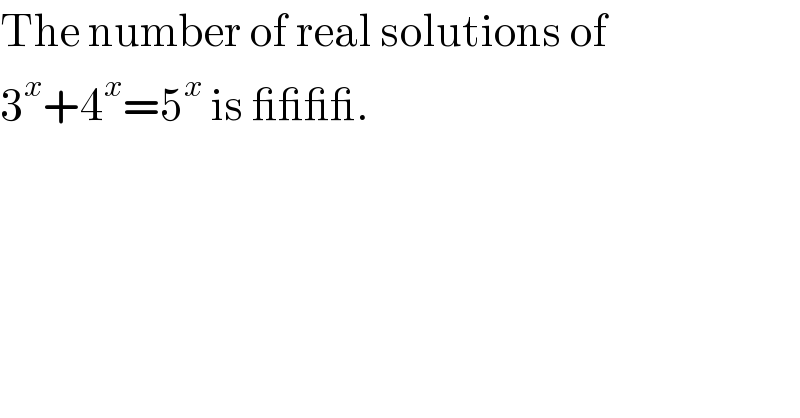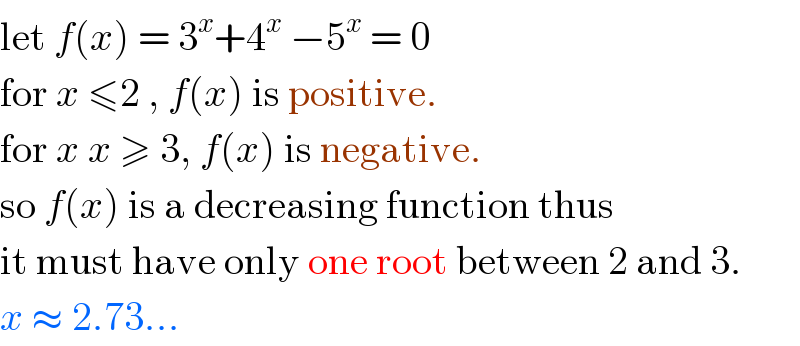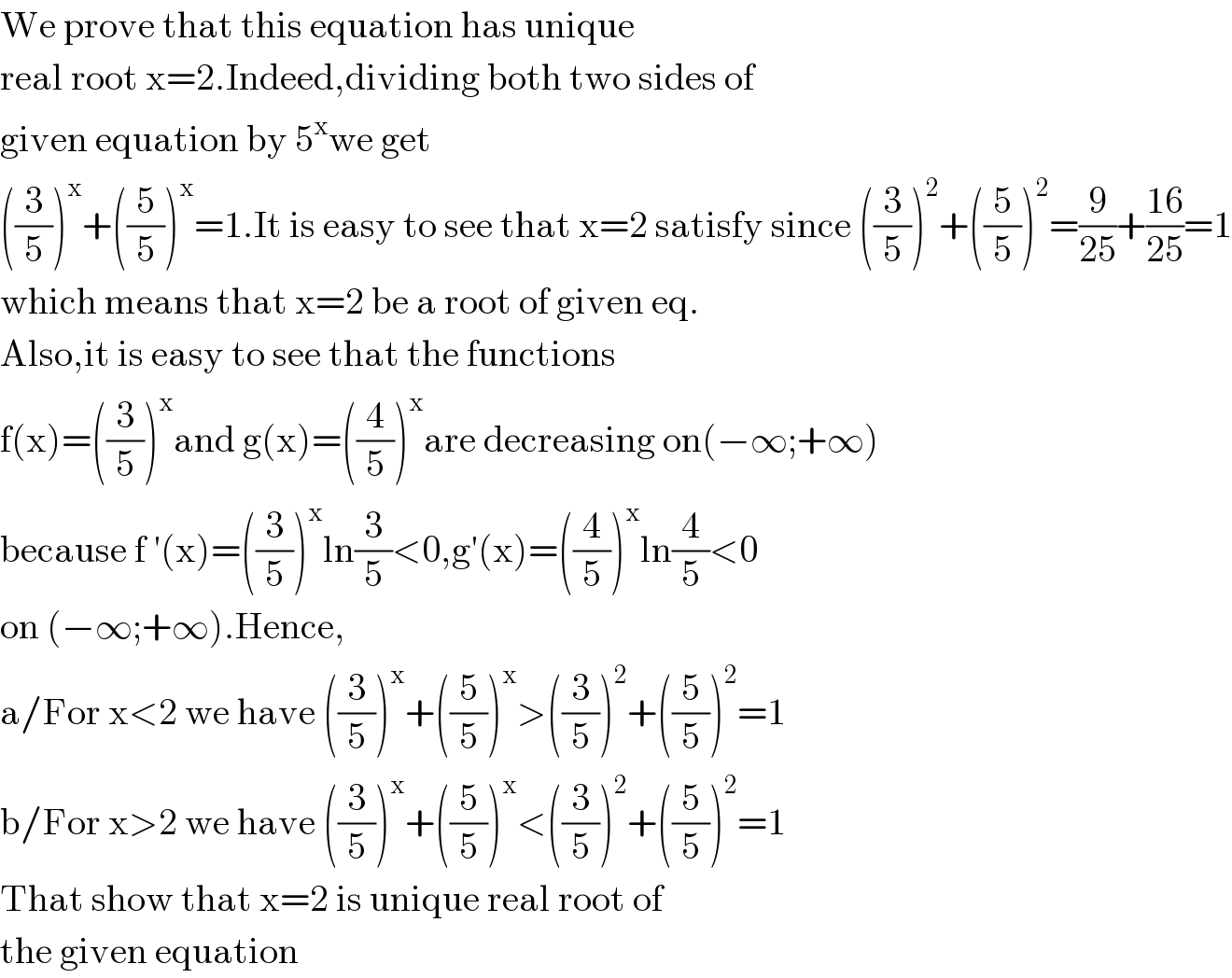
Question and Answers Forum
Question Number 98057 by PengagumRahasiamu last updated on 11/Jun/20

Answered by Rio Michael last updated on 11/Jun/20

Commented by mr W last updated on 11/Jun/20

Answered by 1549442205 last updated on 12/Jun/20

| ||
Question and Answers Forum | ||
Question Number 98057 by PengagumRahasiamu last updated on 11/Jun/20 | ||
 | ||
Answered by Rio Michael last updated on 11/Jun/20 | ||
 | ||
| ||
Commented by mr W last updated on 11/Jun/20 | ||
 | ||
Answered by 1549442205 last updated on 12/Jun/20 | ||
 | ||
| ||